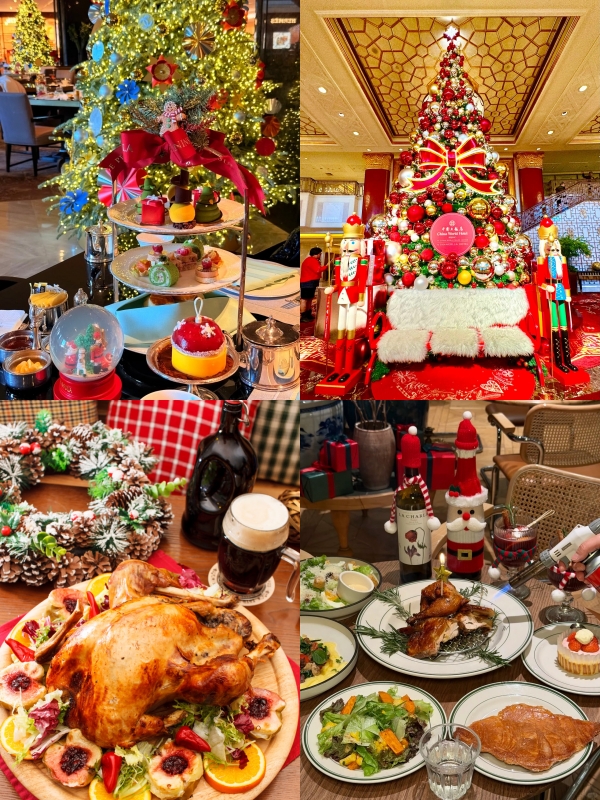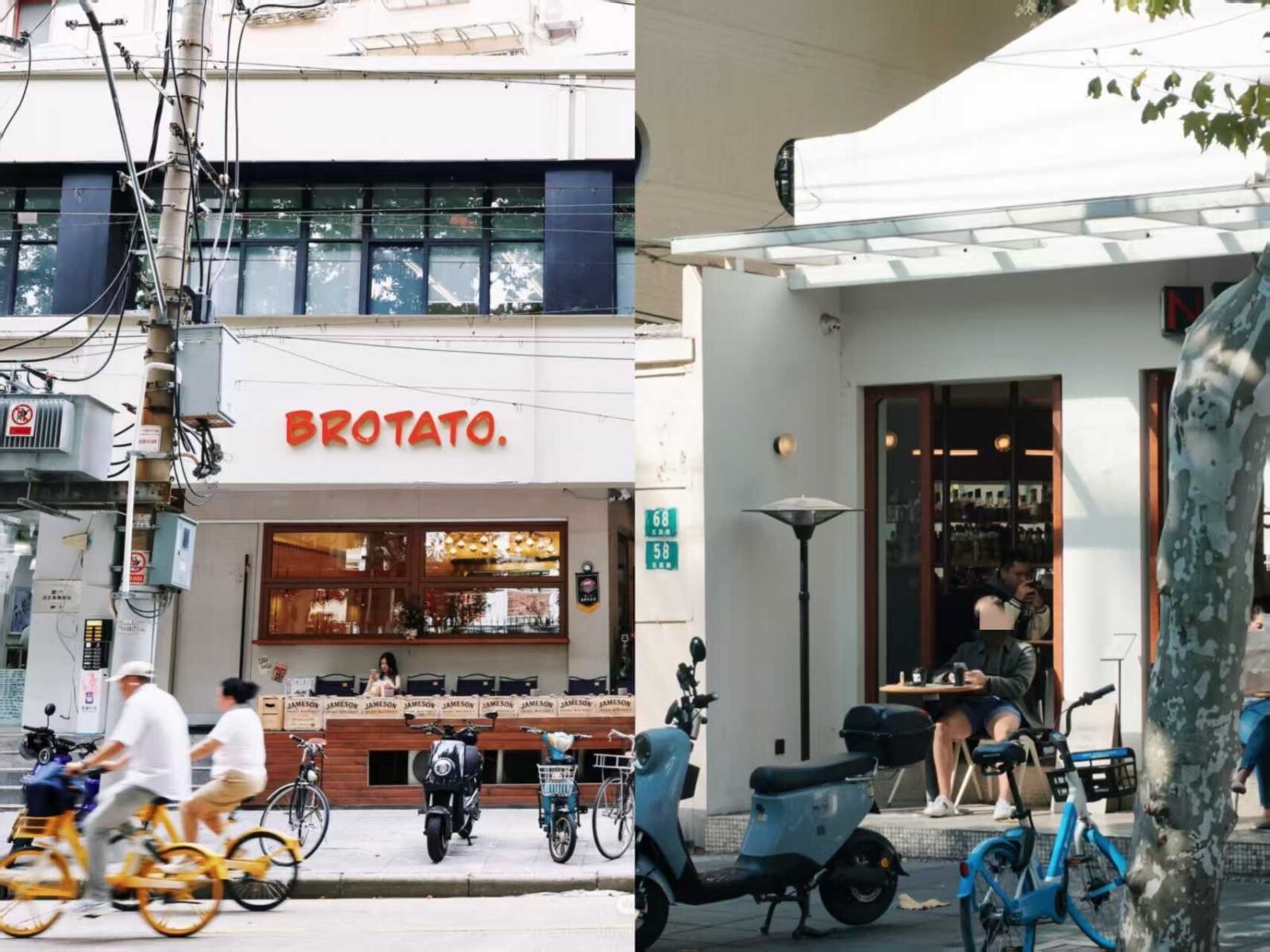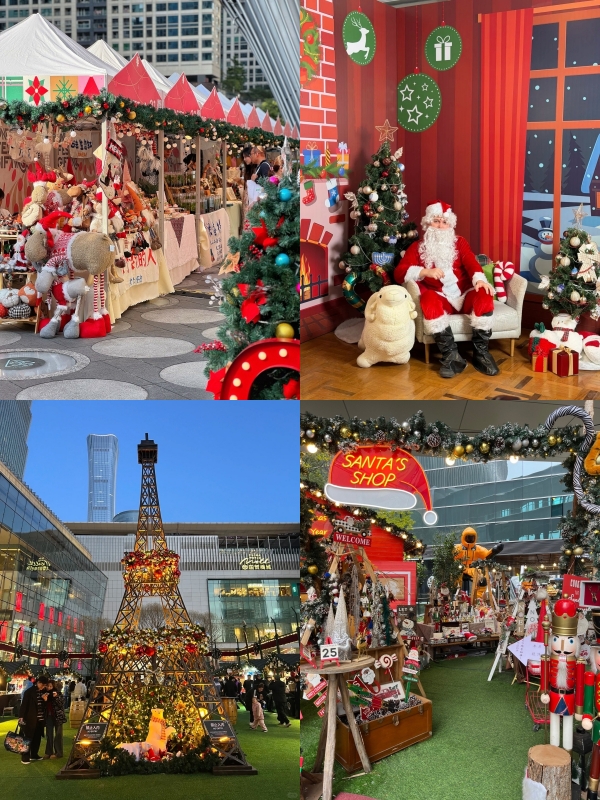Beijing, also called Peking, is the capital of China. From its historically rich culture to the skyscrapers dotting the city skyline, the city retains a fascinating blend of ancient and modern traits. There are many stunning palaces, temples, markets, and modern-day architectural wonders in which Beijingites take pride. This week-long journey log will help travelers navigate and explore the city's all-time favorite destinations. Travelers who are altruistic toward learning, indulging in rich cuisines, or simply curious will experience China through optimal sights and sounds. The city is a wonderful place with sights one will not forget seeing for a long time. Get set to explore the charm of Chinese history and culture.
What are the top historical sites to visit in Beijing?

Exploring the grandeur of the Forbidden City
The Forbidden City at Beijing's center is a remarkable piece of Chinese history, one of the seven wonders of China. From 1420 to 1912, the place was the Imperial Palace for the 24 Ming and Qing dynasty Emperors. With almost 980 buildings, the entire perimeter has a total area of 720,000 square meters, making it more significant than Washington, DC. The Forbidden City showcases classical Chinese architecture. Notice large palaces built circa during the Ming dynasty, such as the Palace of Tranquil Longevity.
A moat that is 52 meters wide and walls standing 10 meters high offers a stunning view back of the structure, allowing the emperors of the dynasty to feel secure and protected. To enhance the authority and the rulers in the place, aligning feng shui principles were used to maximize the area, with the buildings being set on a south-to-north axis. As a guest, you can enter through the grand Meridian Gate and visit “The Gate of Celestial Blessing,” “The Hall of Preserving Harmony,” and many more, which offer a statistic viewing experience.
Now, as we leap forward to modern culture, the place serves as a museum with more than 1.8 million artifacts and preserves the old remnants of the historic site. You should consider visiting for half a day to immerse yourself and learn the history thoroughly. There are guided tours that delve deeper into the cultural meaning behind the site.
Walking through history at the Temple of Heaven
Located along the southeastern border of China’s capital, the Temple of Heaven is an architectural marvel embodying the principles of Chinese cosmology. It was constructed during the Ming and Qing Dynasties as a sacred site for emperors to hold ceremonial prayer rituals for abundant harvests. The stunning Hall of Prayer for Good Harvests, the Circular Mound Altar, the Imperial Vault of Heaven, and the Echo Wall are only a few structures within this awe-inspiring complex intricately designed concerning ancient Chinese philosophy of the balance between earth and heaven.
Cosmology and balance in nature are heavily emphasized within the design and layout of the Temple of Heaven. For example, the circular structures that dominate the complex symbolize heaven, while the squared structures represent earth. The Echo Wall's smooth surface proves another aspect of practical genius design: unparalleled acoustics. Visiting this site not only displays China’s architectural skill, but offers insight into the spiritual and cultural values held dear by historic China.
Discovering the beauty of the Summer Palace
The Summer Palace, Beijing’s fascinating tourist attraction, is an architectural wonder that combines landscaped nature with human-made structures. This vast estate encompasses a considerably large area of 2.9 square kilometers, 75 percent of which is water, represented by Kunming Lake. Central to its majesty is Longevity Hill, which rises about 60 meters and provides breathtaking views of the lake and the bordering gardens. Its design is based on classic Chinese landscape gardening featuring pavilions, bridges, and even temples that form a retreat.
Kunming Lake: It spans about 2.2 square kilometers with an average depth of 1.5 meters, and its design is reminiscent of the West Lake in Hangzhou.
Longevity Hill: Its height of nearly 60 meters aids in placing the hill where its beauty can be appreciated while still enhancing the symmetry along with the feng shui of the palace.
Long Corridore (Chang Lang): This corridor is more than 728 meters long and, due to its roof, is protected from the elements from visitors. It is decorated with intricate historical and mythical paintings.
Every feature of the Supreme Palace is fully justified, making it one of the finest examples of harmoniously blended architecture and socio-cultural beauty. The marvelous attraction offers guests a glimpse into the past and breathtaking scenery.
How can I experience the Great Wall of China from Beijing?
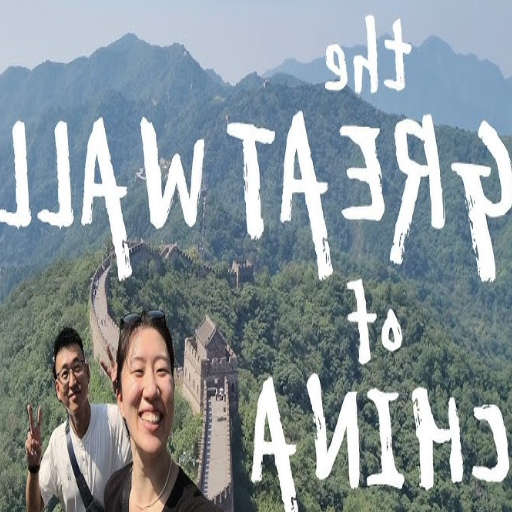
Choosing the best section of the Great Wall to visit
While looking at Great Wall excursions, consider what experience level you want before deciding which section to visit. For a well-maintained and fully equipped area, Badaling is a great bargain and a crowd favorite for first-time visitors. If you want to avoid large groups and prefer something authentic, you will undoubtedly enjoy Mutianyu, which has some of the most beautiful vistas and well-maintained infrastructure. For most adrenaline junkies, Jiankou offers the most heart-pumping views; however, along with its stunning nature, it serves a highly rugged experience that requires excellent physical fitness and means, as hikers will encounter steep and rough terrain.
Transportation - Badaling and Mutianyu can be reached more conveniently by public transport or tour buses. At the same time, Jiankou's transportation requires pre-scheduling and is not as easy to get.
Physical efforts: Badaling and Mutianyu have paved paths and supporting facilities and are easy for any fitness level. However, Jiankou is considered more complex and involves more arduous hikes without modern construction.
Crowd density - Badaling attracts the most tourists, while Mutianyu is less prevalent. Jiankou is again the least disturbed; however, it is only advisable for expert hikers.
Jiankou presents rugged and wild scenery, Mutianyu provides beautiful views with a side of lower tourist traffic, and Badaling is famous for the quintessential Great Wall photographs.
They all cater to specific preferences regarding ease of travel, authenticity, or thrill-seeking, and selecting the proper section can affect the overall experience.
Planning a day trip to the Great Wall
For my Great Wall day trip, one of the first decisions I would make is which section of the wall best fits my needs. If I want to see the breathtaking views, and I also want convenience, then Badaling would be my section of choice due to its easy access by train or bus as well as maintained pathways. If I would like a more scenic and quieter area, then Mutianyu would suit my needs as it is less crowded and has a cable car. If I want an adventurous section that is less traveled, then Jiankou would capture my attention, but I would have to make sure I am ready for rough hikes and have the right equipment.
Badaling: The most straightforward section, the Great Wall Experience, is located northwest of Beijing. Great for first-time visitors or beginners. Extension via public transport such as trains and shuttle buses is readily available. If you decide to visit, the GPS coordinates are about 40.3553 N° and 116.0205° E.
Mutianyu, great moderation of photography and hiking. Has a cable car for easy access. Cordis are roughly 40.4319° N, 116.5704° E.
Jiankou: Hiking experience only; most of the wall has not been restored, which makes the section less popular. I recommend boots with good traction and a GPS tracker since the path can be tricky. Cordis are 40.4899° N, 116.5484° E.
Whichever option I choose, it will revolve around the combination of convenience, my activity level, and the type of experience that I expect on this unforgettable trip.
Capturing unforgettable moments at this world wonder
My strategy to make the most of this world wonder is to pick locations that combine great views with affordable safety and easy access. For those categories, I would prefer the Mutianyu section for its moderate hiking options and breathtakingly restored views. The cable car is incredibly convenient, and the toboggan ride is a unique bonus. Furthermore, this portion is less crowded, greatly improving my photo opportunities, as I can take pictures without large crowds interfering. I plan on bringing a high-resolution camera or smartphone with plenty of battery to capture this section's stunning panoramic views.
If I had a more adventurous, ‘off the beaten path’ approach in mind, then the Jiankou section is an alternative. This portion is untamed, meaning more dramatic scenery and severe hiking paths. I would need additional protective gear such as strong hiking boots and GPS trackers to be secure and effectively navigate. Extra care would need to be taken when taking pictures because of the unrestored steep paths. Because of this, even with the incredible photographic potential of Jiankou, I still prefer the safer backyard beauty of Mutianyu.
What are the must-try culinary experiences in Beijing?
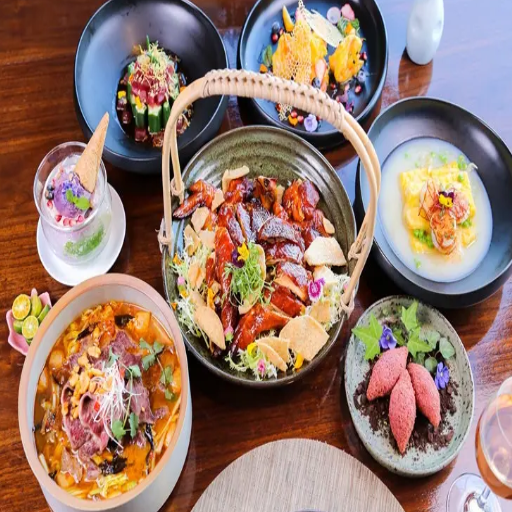
Savoring authentic Peking duck at local restaurants
Relishing real Peking duck is one of the northernmost regions of China, Beijing’s treasured culinary delight, which merges techniques that are centuries old with rich flavors. You may try looking into eateries such as Quanjude and Da Dong as they hold quite the reputation for the accuracy of roasting the duck with fires from fruitwood. The technicalities which contribute immensely to an exceptional Peking duck are:
Preparation Method: The duck is air-dried with a unique glaze to ensure maximum crispness when roasted.
Roasting Process: This is an old recipe’s approach: thoroughly roast the duck at high temperatures until it achieves a golden, crispy, thin skin while sustaining its juicy tenderness.
Serving Style: Thin pancakes are served on the side, along with sweet hoisin sauce and vegetables cut into thin strips, making this dish a perfect complement to the main dish.
Truthfully, only by having the duck with authentic Peking roast can anyone genuinely appreciate Beijing’s culinary traditions.
Exploring the flavors of Wangfujing Street
For food lovers, Wangfujing Street is like a paradise, showcasing Beijing's food culture with various flavors. From sweet and chewy tanghulu candied fruits to savory skewers of grilled lamb, the street boasts a lively food scene. Wangfujing offers some remarkable delicacies, which include:
Lamb Skewers: These lamb pieces are seasoned with cumin, chili powder, and a dash of salt and grilled over an open fire, resulting in a strong, smoky, charred flavor.
Tanghulu: Usually hawthorn fruits, these candied fruits have a sugar syrup coating, offering a mix of sweetness and a subtle sour taste.
Stinky Tofu: A garnished fried tofu with garlic and chili paste with a distinctive aroma and taste as it’s fermented and deep fried.
Any tourist visiting Wangfujing will have a chance to experience the different flavors, smells, and looks of the food that symbolizes the culture of Chinese street food.
Enjoying a traditional tea ceremony
Participating in a traditional tea ceremony helps connect with culture, history, and mindfulness. This intricate process involves multi-dimensions of respect and specific technical parameters to achieve authenticity and quality. Here are some aspects to note:
Tea Selection: Depending on the ceremony, time of year, and theme, the teapots selected are for pu-erh, oolong, or green tea, which are high-quality teas with typically loose leaves.
Water Temperature: Each variety of tea has different ideal water temperatures: green tea (70-80°C), oolong tea (85-90°C), and pu-erh (95-100°C). The ideal temperature helps preserve flavor and aroma.
Utensils: Essential tools include a teapot (made of Yixing clay or porcelain), a tea tray, and small cups. Each contributes to the ritual's aesthetics and functions.
Steeping Time: The exact steeping time depends on the tea. Green tea requires 1-2 minutes, oolong requires 2-4 minutes, and pu-erh tea takes 3-5 minutes. The timing of each tea type impacts its strength and character.
Serving and Drinking: Tea is served in small cups in silence, emphasizing its color, fragrance, and taste.
Drinking tea is only one aspect of the tea ceremony. It aims to foster tranquility, discipline, and appreciation, which can be extended to the finer details of life.
What modern attractions should I include in my Beijing itinerary?
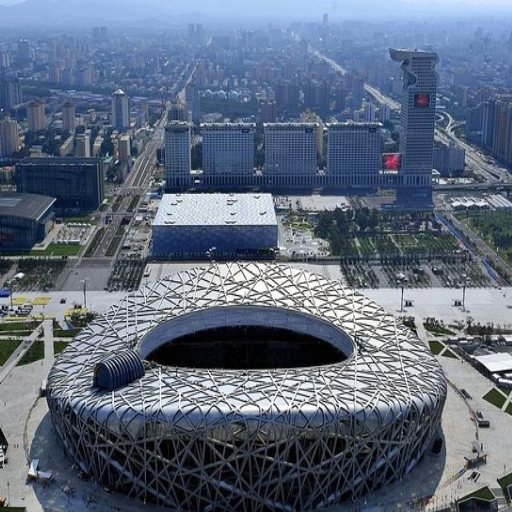
Exploring the innovative 798 Art District
798 Art District is the Contemporary Art and Culture Center of Tourist Attraction in an old factory setting. With its modern vibe and industrial design, the district has a distinct fusion of galleries, boutique design shops, and cafes. Visitors enjoy exhibitions featuring notable works from local and international artists alike.
Key Highlights of the District:
Workshops And Events: Many art studios conduct workshops, festivals, and performances are organized quite often.
Art Galleries: UCCA Center for Contemporary Art and Pace Beijing are notable art galleries that exhibit astonishing contemporary masterpieces.
Street Art And Sculptures: There are also numerous big street art paintings and public sculptures around the district.
Dining And Shopping: Sophisticated modern cafes, restaurants, and art shops combine art with pleasure.
The 798 Art District is an exceptional place, preferred for its laid-back mood and easy access to various sites in Beijing.
Visiting Olympic Park and the Bird's Nest Stadium
The timeless architectural treasures of Beijing, namely the Olympic Park, the Bird’s Nest National Stadium, and the National Aquatic Center, are symbols of innovation and rich history. Designed for the 2008 Summer Olympic Games’ headline event, The Bird’s Nest National Stadium accommodates around 80,000 spectators. Due to specially designed circumstances, this number can be expanded to 91,000. This outstanding structure is covered by over 258,000 square meters of area. It is planned to possess symbolic imagery representing strength and unity through the intricate steel frame supporting the stadium, resembling a bird's nest.
Thanks to the Green spaces around the Water Cube National Aquatic Center, tourists can easily engage with the Olympic Park's sites. The park boasts an exhibition dedicated to the history of the Olympics, where tourists can visit the different sections and thoroughly relish the beauty of the Bird’s Nest Stadium’s interiors. The park is also conveniently located next to several subway stations, which provides locals and tourists with a spectacular opportunity to venture.
Discovering contemporary Chinese art at the National Museum of China
My visit to the National Museum of China was great because it enabled me to interact with the contemporary Chinese art world. The museum's collection is admirable. I was impressed by how China’s modern art is depicted. There are sculptures, installations, and paintings that capture the country's social, political, and cultural forces, and impressive artistic techniques and creativity accompany them.
If this affects any associated technical aspects regarding documenting and researching pertinent notes on art pieces, such parameters are indeed necessitated by the context and relevance of the work's importance. This guarantee traces proper documentation and informs the cultural narratives that seek to be understood and captured.
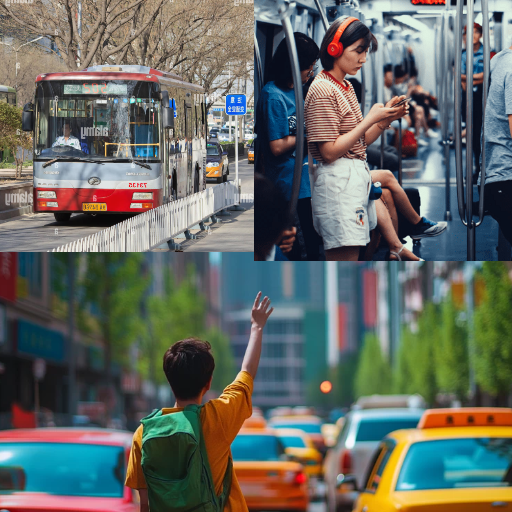
Understanding the Beijing subway network
Perhaps one of the most effective ways to get around a sprawling city like Beijing is the Beijing subway network. With more than twenty lines and over four hundred stations in place, it almost wholly services all key parts of Beijing. Most operate between 5:00 AM-11:30 PM, depending on the line and the station. During heavy traffic, trains arrive approximately every 2-3 minutes and 5-8 minutes during non-peak days.
Tickets can be purchased from vending machines in and around subway stations. Fares are based on the distance traveled, so ¥3- ¥10 is the typical range. The subway system provides signs to guide users in English and Mandarin to make navigating easier for travelers and tourists. The system is made to endure high numbers of passengers, ensuring that during peak hours or crowded delays, standing space and air conditioning are available in the carriages to make the experience comfortable.
Tips for using taxis and ride-sharing services
In Beijing, ride-sharing services and taxis are practical and convenient, although prior preparation is necessary. Taxis should be licensed; usually, these types of vehicles have a "TAXI" sign illuminated on top with a working meter. The starting fare is approximately ¥13 for the first 3 kilometers, and an additional charge of about ¥2.3 per kilometer is added after that.
It is preferable to set up DiDi, a ride-sharing service, ahead of time so that non-Mandarin speakers can benefit from the English interface. Payment methods are available through identified accounts such as Alipay and WeChat Pay. The waiting period tends to increase during peak times or rainy days, and so does the price. For convenience and safety, check the license plate and driver info provided through the app.
Getting to and from Beijing's airports
Beijing is served by two major airports: Beijing Capital International Airport (PEK) and Beijing Daxing International Airport (PKX). Both airports offer various modes of transportation catering to different requirements.
Beijing Capital International Airport (PEK)
By Taxi: Very easy to use as there are taxi ranks at every terminal. Taxis to Beijing's center cost approximately RMB 100-150, depending on traffic and distance from the airport.
By Airport Express Line: The best value for money transportation in Beijing is RMB 25 per trip. This service connects Terminal 2 and Terminal 3 to the city center using Dongzhimen station.
By Shuttle Bus: Buses go to and from important places in Beijing for around RMB 20-30.
By Private Car App: Private hire vehicle apps like DiDi are common. However, fees increase during busy hours (check the app for pricing and wait time).
Beijing Daxing International Airport (PKX)
By Taxi: Central Beijing is approximately 150-200 RMB away via taxi; the price depends on the specific location and current traffic.
By Beijing-Xiong’an Intercity Railway: One of the most efficient options is taking the railway to the Beijing West Railway Station for about 30-40 RMB.
By Shuttle Bus: Dedicated buses also enable travelers based at the airport to go to some significant regions of the city, charging approximately 30-40 RMB.
By Private Car App: As with PEK, airport access is provided via private car apps like DiDi, incurring similar costs and waiting times.
Regardless of the option for traveling to the airport, always check the traffic conditions during your trip and determine the most economical and timely option.
Frequently Asked Questions (FAQs)
Q: What are the activities in Beijing a tourist simply cannot miss?
A: From the Great Wall of China and The Forbidden City to Tiananmen Square and the Temple of Heaven, there is no shortage of sites that make Beijing a fantastic city. Make sure to relish the experience of the city's traditional hutongs, the Summer Palace, and the Bird’s Nest Olympic Stadium, which is breathtakingly beautiful.
Q: Does Tiananmen Square have anything worth seeing, and is it worth visiting?
A: Yes! Tiananmen Square is Beijing's most famous landmark and a must-visit place. Here, you will see the Monument to the People’s Heroes, the Great Hall of the People, the National Museum of China, and Mao's Mausoleum. It is also the entrance to the Forbidden City, making it an important attraction while visiting Beijing.
Q: What is a hutong, and what is the significance of visiting one?
A: A hutong refers to a narrow passageway or alley encircled by a traditional courtyard house, and it is a significant highlight of Old Beijing. Visiting one of the hutongs can give you insight into local life and Ming and Qing architecture. For an authentic experience, it is advised to try a rickshaw ride, dine on local food, or stay in a renovated courtyard residence.
Q: Is the Lama Temple a must-visit attraction in Beijing?
A: Known as the Yonghe Temple, the Lama Temple is not the least disappointing, and you will arguably enjoy your visit. It is the most significant and best-kept lamasery in Beijing, with incredible Tibetan Buddhist architecture and art pieces on display. Within the temple lies a beautifully made sight: a 26-meter-high Buddha carved from sandalwood, unlike any other.
Q: For a first-time visitor to Beijing, how long should I stay to visit all the main sights?
A: Four to five days is a reasonable estimate for thoroughly enjoying Beijing's main attractions. Be sure to visit the Great Wall, Forbidden City, and the Temple of Heaven. The cuisine and the local hutongs require time to be fully enjoyed. Consider a week-long stay if you want to explore Bejing's culture even more. This would also give you time allocated for day trips around Beijing.
Q: Are there any day trips around Beijing that you would recommend?
A: Mutianyu and Jinshanling are two excellent Great Wall sections from which day trips can be made from Beijing. The Ming Tombs, Summer Palace, Gubei Water Town, Eastern Qing Tombs, and Jinshanling Great Wall can also be visited for a day trip to see some impressive ancient imperial sites.
Q: In your opinion, when is the best time to visit Beijing?
A: Traveling to Beijing is most advantageous in spring (April to May) and autumn (September to October). The weather is usually warm, the clear skies and Beijing’s sightseeing attractions are perfect for view-watching. Summer (June to August) is hot and very busy, and winter (November to March) is pretty cold, although uniquely beautiful in Beijing as they witness the Forbidden City in snow.
Q: What are some lesser-known places in Beijing that do stand out from the rest?
A: Most tourists tend to stick to the primary attractions, but many secrets of Beijing are waiting to be discovered. Visit the 798 Art District to view and appreciate China’s contemporary art, attend a classical performance of the Beijing Opera, admire the ancient Bell and Drum Towers, or even take casual food tours in local street markets. The Confucius Temple and Imperial College are certainly under-appreciated but remain interesting places for a visit.
